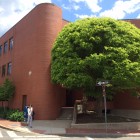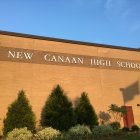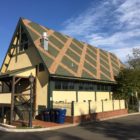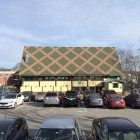Government
P&Z: Board of Ed Lacks Site Plan Approval for ‘Alternative High School’ Downtown
|
The Board of Education plans to install New Canaan’s first-ever “alternative high school” on the second floor of the downtown building its administration currently occupies, though town officials on Tuesday night raised concerns that required zoning approvals for such a program have not yet been obtained. Specifically, the Board of Ed needs approval for a site plan in order to move forward with the program on the second floor of 39 Locust Ave., members of the Planning & Zoning Commission said during their regular meeting.
Though school starts Thursday, the Board of Ed “missed a deadline” to get on the agenda for this week’s meeting, according to P&Z Chairman John Goodwin. “I think when they make the site plan application in September we will learn more,” Goodwin said at the meeting, held at Town Hall. “What is unfortunate is that they are going ahead and doing this without the site plan approval. So my question to them next month is, why did they miss the deadline?”
No Board of Ed members or district administrators attended the meeting.



